Japan Vs South Korea Tourism, which one is the better choice? At SIXT.VN, we understand planning your next vacation can be exciting, but also overwhelming with so many incredible destinations to choose from. Both Japan and South Korea offer unique travel experiences, but catering to different interests and preferences. With our expertise in travel services, we’ll provide you with insights on what makes each country special, helping you make an informed decision for your next adventure. Let SIXT.VN be your guide to crafting unforgettable travel memories, with convenient services such as airport transfers, hotel bookings, and curated tours.
1. What Makes Japan a Top Tourist Destination?
Japan has irresistible trains, a diverse climate, relaxing ryokan and onsen, and breathtaking natural beauty. According to the Japan National Tourism Organization (JNTO), Japan welcomed over 3.8 million international visitors in March 2024, highlighting its enduring appeal as a top tourist destination. Let’s delve into what makes Japan such a special travel destination.
1.1. How Impressive is the Japanese Railway System for Tourists?
The Japanese railway system is incredibly impressive for tourists because it blankets the entire country and is one of its top attractions. The Japan Rail Pass offers fabulous value for shuttling between cities, relaxing on comfortable Limited Express trains, and exploring local branch lines.
The railway network is known for its punctuality, efficiency, and extensive coverage, making it easy for tourists to explore various regions. According to research from the Japan National Tourism Organization (JNTO) in 2023, the Japan Rail Pass is highly valued by tourists, providing cost-effective travel across the country.
The best routes: Some of the best train trips include the Tohoku Shinkansen’s top-speed section north of Omiya, the single-car branch line between Abashiri and Kushiro in Hokkaido, the Limited Express Yakumo from Okayama to Matsue, and the SL Ginga steam trains from Takasaki.
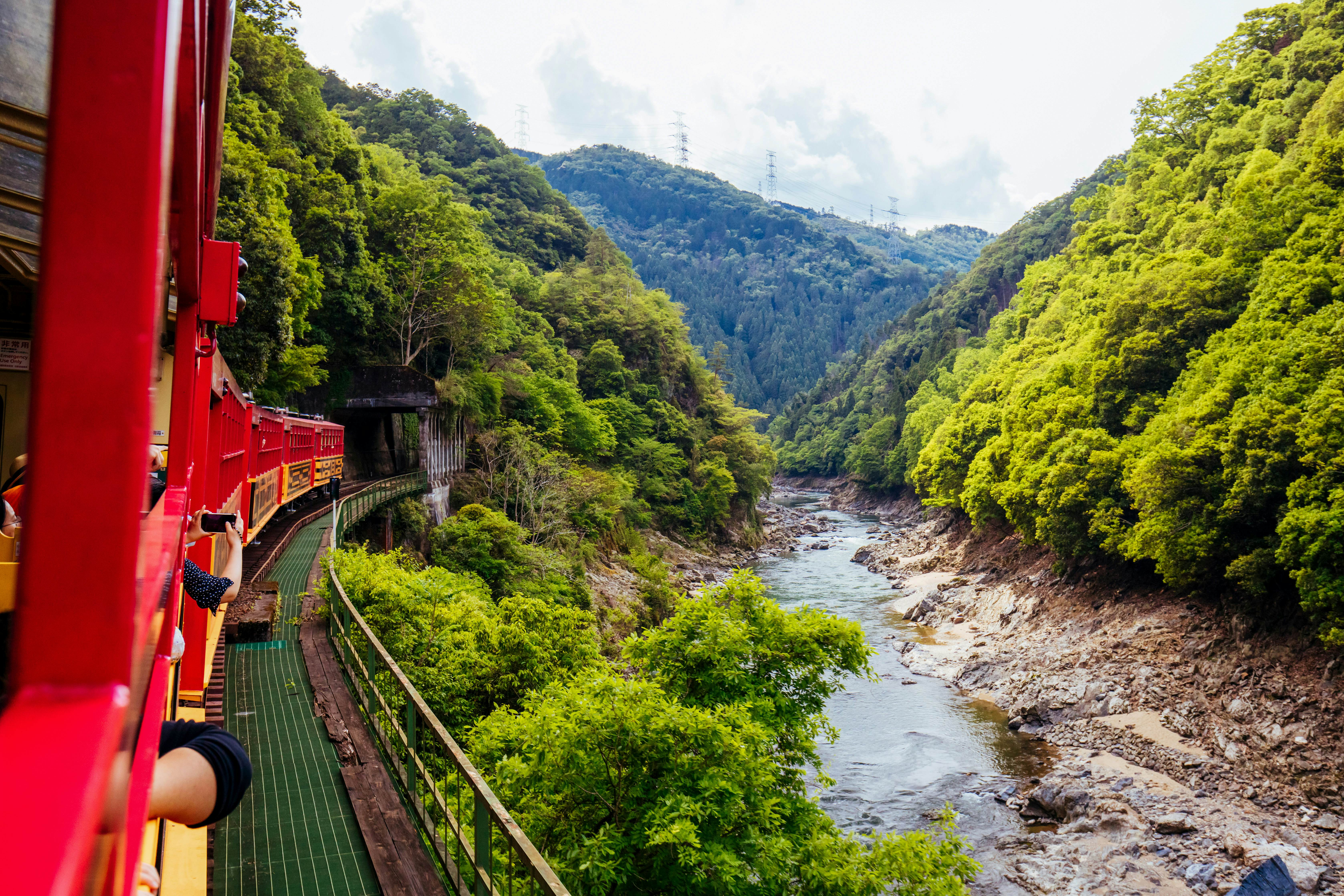 Sagano Romantic Train along the Katsura River near Kyoto, Japan, offering scenic views
Sagano Romantic Train along the Katsura River near Kyoto, Japan, offering scenic views
1.2. What are the Best Seasons to Visit Japan?
Japan is a country for all seasons. It crosses many climatic zones, from tropical Okinawa to the northern island of Hokkaidō. This means there is not only more to do, but also more variety and a wider range of pleasant weather seasons.
Each season offers unique experiences, from cherry blossoms in spring to vibrant foliage in autumn. According to the Japan Meteorological Agency, the best times to visit for pleasant weather are spring (March to May) and autumn (September to November).
For example, you can head north to Hokkaidō, where the temperatures are balmy but not muggy, and enjoy the freshest of fish in historical Hakodate. In autumn, head southwest to Kyūshū to extend short-sleeve weather. Kumamoto and Kagoshima are delightfully sunny and warm even into late November.
1.3. What is the Significance of Ryokan and Onsen in Japanese Culture?
Ryokan (traditional Japanese inns) and onsen (hot-spring baths) are significant because they provide the perfect way to build intensive relaxation time into your trip. Japanese people love to relax and are excited to share their traditions with visitors.
Ryokan offer a unique cultural experience with tatami mats, traditional meals, and impeccable service. According to research from the Japanese Ministry of Tourism in 2022, ryokan and onsen are highly valued by both domestic and international tourists for their relaxation and therapeutic benefits.
From the moment you arrive at a ryokan, your worries melt away, and all you have to think about is what book you want to read sitting by the scenic window in your room. In a picturesque onsen town, you can go for a little wander in a yukata robe as you ponder which of the multiple onsen baths you want to slip into to soak away your cares (and relieve your sore traveler muscles).
Thousands of onsen can be found around Japan, from the famously beautiful one in Matsuyama that inspired Miyazaki’s 2001 movie Spirited Away to the one inside the railway station at Echigo-Yuzawa.
1.4. What Outdoor Activities Can You Enjoy in Japan?
Japan’s outdoor activities are many and widespread. Once you get out of Japan’s cities, the natural beauty is a stunning surprise, accessible by both Shinkansen and local trains.
Hiking is incredibly popular, and many people love skiing. There is even a special seasonal spur of a Shinkansen bullet train line that goes directly to the Gala Yuzawa ski resort. According to the Japan National Tourism Organization (JNTO), outdoor activities are a significant draw for tourists seeking adventure and natural beauty.
Don’t miss the gorgeous Sanriku Coast in the Tōhoku region, with its rugged peninsulas and promontories. Rugby-loving Kamaishi or sleepy Miyako, with its stunning Jōdogahama Beach, are great starting points for exploring this region.
 A torii gate at Aso Shrine framed by yellow gingko trees in autumn, symbolizing Japan's rich cultural heritage
A torii gate at Aso Shrine framed by yellow gingko trees in autumn, symbolizing Japan's rich cultural heritage
2. Why Should South Korea Be Your Next Destination?
South Korea is known for its cultural wave, ease of travel, fiery flavors, and friendly people. According to the Korea Tourism Organization, South Korea saw a 228% increase in international tourist arrivals in 2023 compared to the previous year, indicating its growing popularity as a travel destination. Let’s explore what makes South Korea an attractive option for your next trip.
2.1. How Significant is the Korean Cultural Wave (Hallyu) for Tourism?
The Korean cultural wave, or Hallyu, is incredibly significant for tourism. From Bong Joon-ho’s Parasite winning Best Picture at the Oscars to girl group Blackpink blowing up Coachella, the world can’t get enough of South Korea.
The global popularity of Korean music, movies, and dramas has significantly boosted tourism, attracting fans and culture enthusiasts. According to a 2023 report by the Korea Culture & Tourism Institute, Hallyu has contributed billions of dollars to the South Korean economy through increased tourism and related industries.
South Korea’s golden age is happening right now, and you should absolutely be part of it.
2.2. How Easy is it to Travel Around South Korea?
It’s easy to travel around the whole country of South Korea. You can travel the length of the country – from the electric capital Seoul to the bustling southern port city of Busan – in just a couple of hours by high-speed train.
The country’s compact size and efficient transportation system make it easy for tourists to visit multiple destinations in a short period. According to Korea Rail Network Authority, the high-speed train system connects major cities, reducing travel time and enhancing convenience for travelers.
Side forays to any number of incredible places, like the ancient tombs and temples of Gyeongju, or the dreamy peaks and waterfalls of Seoraksan National Park. Or why not venture right to the edge of North Korea with a trip to the DMZ?
2.3. What Makes Korean Cuisine Unique and Flavorful?
Korean cuisine is unique and flavorful because it slaps you around the face with flavor, heat, and spice. Whether you’re cooking up galbi (beef short ribs) on a tabletop grill, going hard on chimaek (fried chicken and beer), or slurping down a fiery kimchi-and-pork stew, eating is a hearty, visceral pleasure in Korea.
The cuisine is known for its bold flavors, use of fermented ingredients, and communal dining experiences. According to a 2022 survey by the Korean Food Promotion Institute, international tourists highly rate Korean food for its taste and health benefits.
And a word about banchan, those little side dishes of delicious treats you get with most meals: they’re both free and refillable. What’s not to love?
Here are some of the country’s best dishes to look out for:
- Bibimbap: Rice topped with egg, vegetables and spicy sauce
- Bulgogi: Slices of grilled beef wrapped in lettuce leaves
- Dakgalbi: Chicken, veggies and rice cake sautéed in a spicy sauce
- Kimchi jjigae: Stew made with classic spicy version of fermented cabbage
- Pajeon: Batter pancakes flavored with spring onions
- Samgyetang: Chicken stuffed with rice and ginseng in a soup
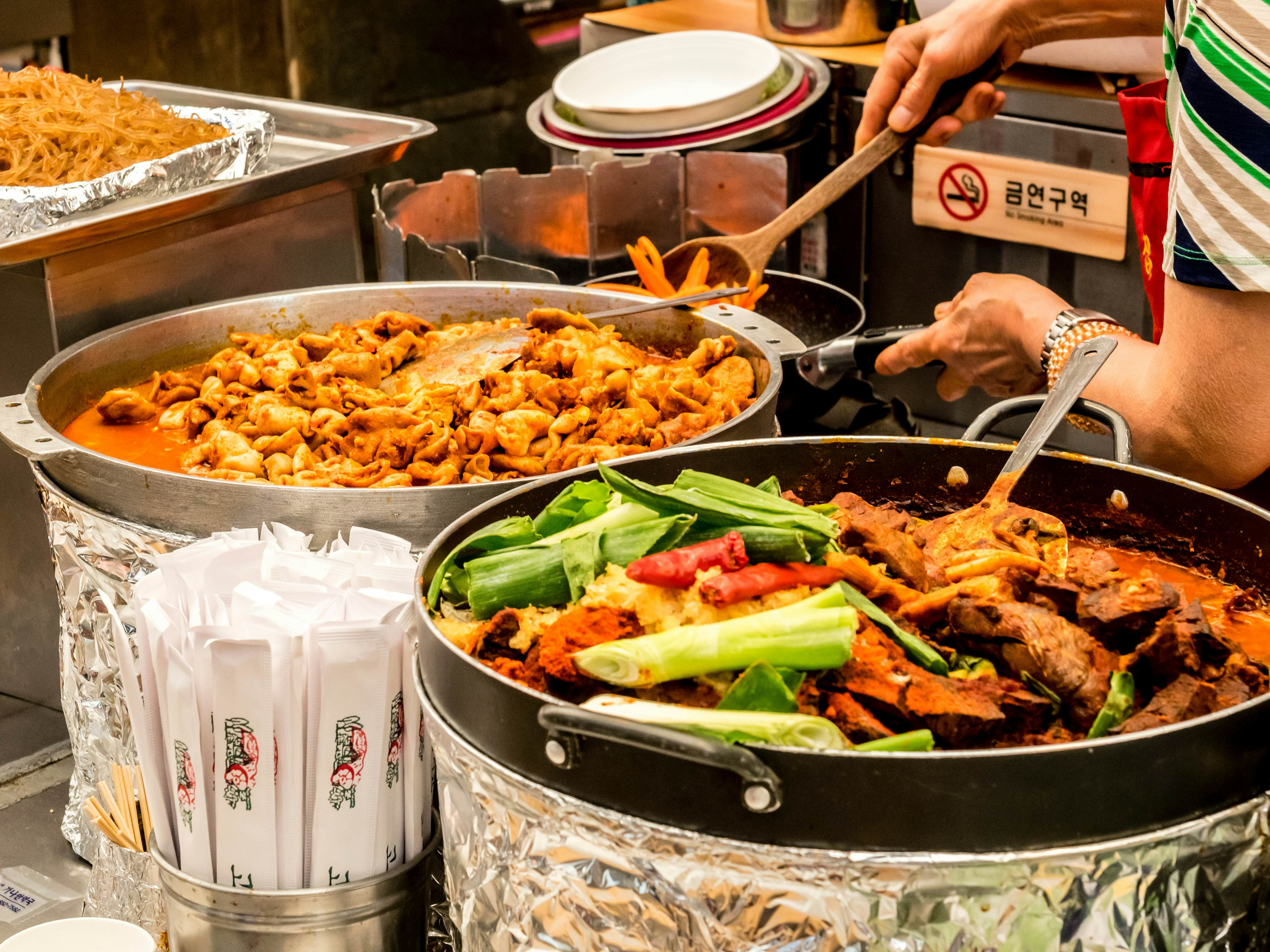 Korean food at Gwangjang Market in Seoul, showcasing the vibrant flavors and communal dining experience
Korean food at Gwangjang Market in Seoul, showcasing the vibrant flavors and communal dining experience
2.4. How Hospitable are the People in South Korea?
The Korean people themselves are the true highlight of any trip to South Korea. It’s as if hospitality, helpfulness, and respect are hard-wired into their DNA.
The locals are known for their kindness, respect, and willingness to help visitors, creating a welcoming and positive travel experience. According to a 2021 study by the Korea Tourism Organization, tourists consistently rate the friendliness of South Koreans as one of the top reasons for enjoying their trip.
You can guarantee that as you travel through the country, you’ll have encounters with locals that will leave you feeling that little bit more positive about this planet we all share.
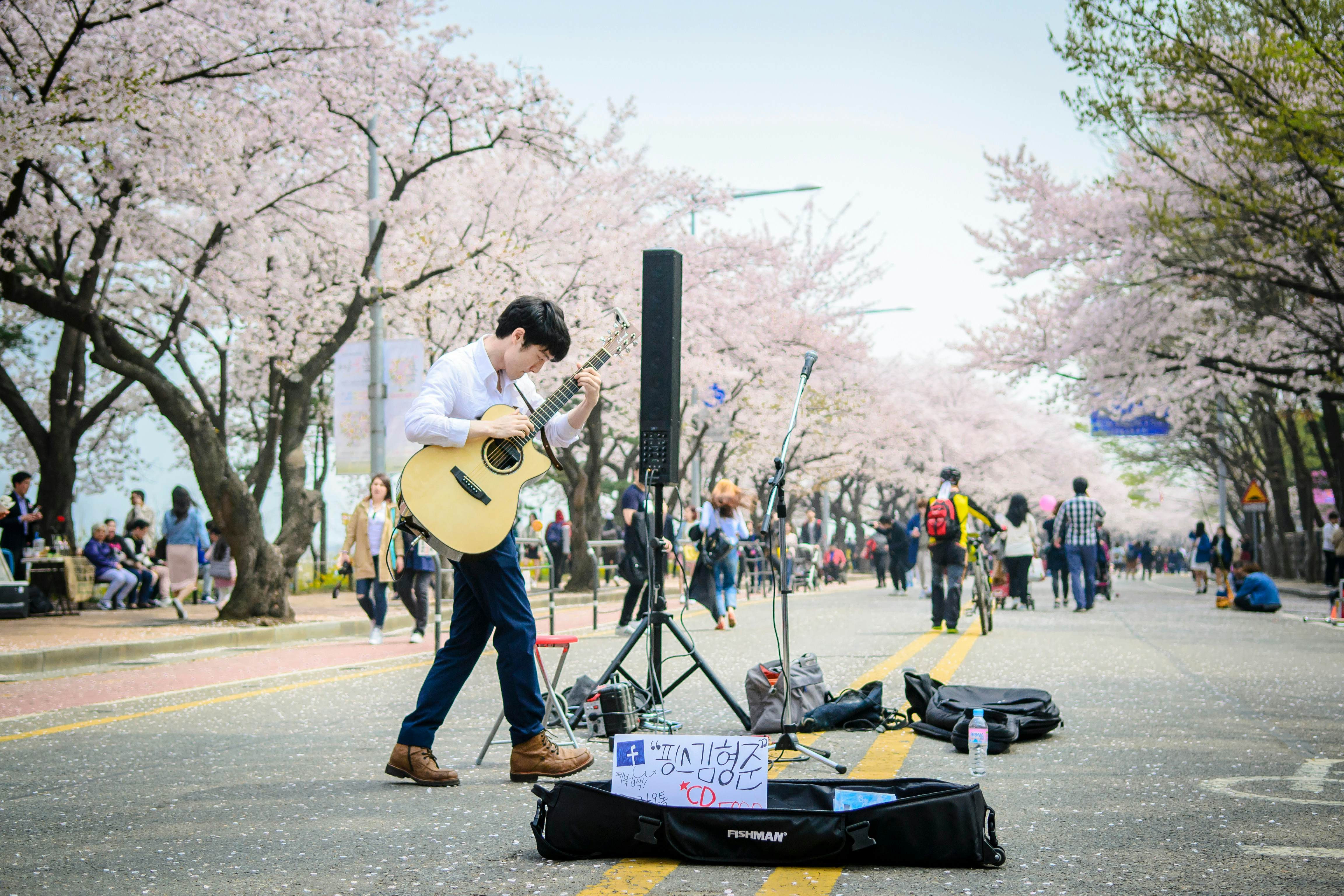 Street performer in Yeouido Park, Seoul, symbolizing the vibrant culture and friendly atmosphere of South Korea
Street performer in Yeouido Park, Seoul, symbolizing the vibrant culture and friendly atmosphere of South Korea
3. Japan Vs South Korea: A Detailed Comparison
Japan vs South Korea: which country is best for your travel plans? Both destinations have much to offer, but they cater to different tastes. Japan, with its traditional culture, efficient transport, and natural beauty, is perfect for those seeking a blend of old and new. South Korea, on the other hand, offers a vibrant modern culture, delicious cuisine, and friendly locals, making it ideal for those looking for a dynamic and engaging experience.
3.1. Culture and Heritage
| Feature | Japan | South Korea |
|---|---|---|
| Traditional Arts | Rich in traditional arts such as calligraphy, tea ceremony, and kabuki theater. According to UNESCO, several Japanese cultural properties are recognized as intangible cultural heritage, reflecting the country’s commitment to preserving its artistic traditions. | Known for traditional music (Gugak), dance, and Confucian rituals. The country emphasizes preserving its heritage through cultural performances and historical sites, many of which are UNESCO-listed. |
| Historical Sites | Numerous ancient temples, shrines, and castles, such as Kyoto’s Fushimi Inari Shrine and Himeji Castle. These sites attract millions of tourists annually, drawn to their historical significance and architectural beauty. | Features ancient palaces, fortresses, and Buddhist temples like Bulguksa Temple in Gyeongju. These sites offer insights into Korea’s dynastic history and cultural heritage. |
| Modern Culture | Anime, manga, and video games are significant cultural exports. The country’s modern culture is a blend of traditional values and technological innovation, influencing global trends. | The “Korean Wave” (Hallyu) has popularized K-pop, K-dramas, and Korean cinema worldwide. This cultural phenomenon has increased tourism and interest in Korean culture. |
3.2. Food and Drink
| Feature | Japan | South Korea |
|---|---|---|
| Cuisine | Known for its emphasis on fresh, seasonal ingredients and precise culinary techniques. Sushi, ramen, and tempura are globally recognized dishes. According to the Ministry of Agriculture, Forestry and Fisheries, Japanese cuisine prioritizes the natural flavors of ingredients. | Characterized by bold flavors, the use of spices, and fermented ingredients. Kimchi, bulgogi, and bibimbap are popular dishes. The Korean Food Promotion Institute notes that fermentation is a key aspect of Korean cuisine, enhancing both flavor and nutritional value. |
| Dining Experience | Ranges from Michelin-starred restaurants to casual izakayas (Japanese pubs). The dining experience often focuses on presentation and attention to detail. | Includes Korean BBQ restaurants where diners grill their meat, street food stalls, and traditional eateries. The dining experience is often communal and interactive. |
| Unique Dishes | Kaiseki (multi-course haute cuisine), fugu (pufferfish), and matcha-flavored desserts. These dishes showcase Japan’s culinary diversity and innovation. | Tteokbokki (spicy rice cakes), samgyetang (ginseng chicken soup), and bingsu (shaved ice dessert). These dishes reflect the unique flavors and ingredients of Korean cuisine. |
3.3. Scenery and Nature
| Feature | Japan | South Korea |
|---|---|---|
| Landscapes | Diverse landscapes ranging from snowy mountains to subtropical beaches. Cherry blossoms in spring and vibrant foliage in autumn enhance the natural beauty. The Ministry of the Environment notes that Japan’s varied topography contributes to its rich biodiversity and scenic landscapes. | Features mountainous terrain, coastal regions, and lush national parks. The four distinct seasons bring dramatic changes to the landscapes. The Korea National Park Service highlights the ecological significance and scenic beauty of South Korea’s national parks. |
| Natural Attractions | Mount Fuji, the Japanese Alps, and the Inland Sea. These attractions draw outdoor enthusiasts and nature lovers. | Seoraksan National Park, Jeju Island, and the Demilitarized Zone (DMZ). These destinations offer unique natural and historical experiences. |
| Outdoor Activities | Hiking, skiing, and onsen (hot spring) bathing. These activities are popular among tourists seeking relaxation and adventure. | Hiking, exploring national parks, and visiting coastal beaches. These activities cater to a range of interests, from leisurely strolls to challenging treks. |
3.4. Ease of Travel
| Feature | Japan | South Korea |
|---|---|---|
| Transportation | Boasts an efficient and extensive public transportation system, including high-speed trains (Shinkansen) and subway networks. Japan Railways Group (JR Group) reports high levels of punctuality and reliability in its train services. | Has a well-developed public transportation system with high-speed trains (KTX) and subway networks. The Korea Transport Institute emphasizes the efficiency and accessibility of public transport in South Korea. |
| Language Barrier | English signage is available in major tourist areas, but knowing basic Japanese phrases is helpful. | English signage is prevalent in tourist areas, and many Koreans speak English. |
| Visa Requirements | Visa requirements vary by nationality. It is advisable to check the latest visa policies before traveling. | Visa requirements vary by nationality. It is recommended to check the latest visa policies before traveling. |
| Accommodation Options | Offers a range of accommodation options from traditional ryokans (inns) to modern hotels. Ryokans provide a unique cultural experience with tatami mats and onsen (hot springs). | Provides a variety of accommodation options, including hotels, guesthouses, and traditional hanoks (Korean houses). Hanoks offer a glimpse into Korean culture with their unique architecture. |
3.5. Cost
| Feature | Japan | South Korea |
|---|---|---|
| Daily Budget | Generally more expensive than South Korea. Expect to spend around $150-$300 per day depending on your travel style. | Generally more affordable than Japan. A daily budget of $100-$200 can provide a comfortable travel experience. |
| Accommodation | Accommodation costs can be high, especially in major cities. Budget travelers can opt for hostels or capsule hotels. | Accommodation is relatively affordable, with a range of options from budget guesthouses to luxury hotels. |
| Food | Dining out can be expensive, particularly in upscale restaurants. However, affordable options like ramen shops and convenience store meals are available. | Food costs are reasonable, with plenty of affordable options like street food and local eateries. |
| Transportation | The Japan Rail Pass can be cost-effective for long-distance travel, but local transportation costs can add up. | Public transportation is efficient and affordable, making it easy to get around the country without breaking the bank. |
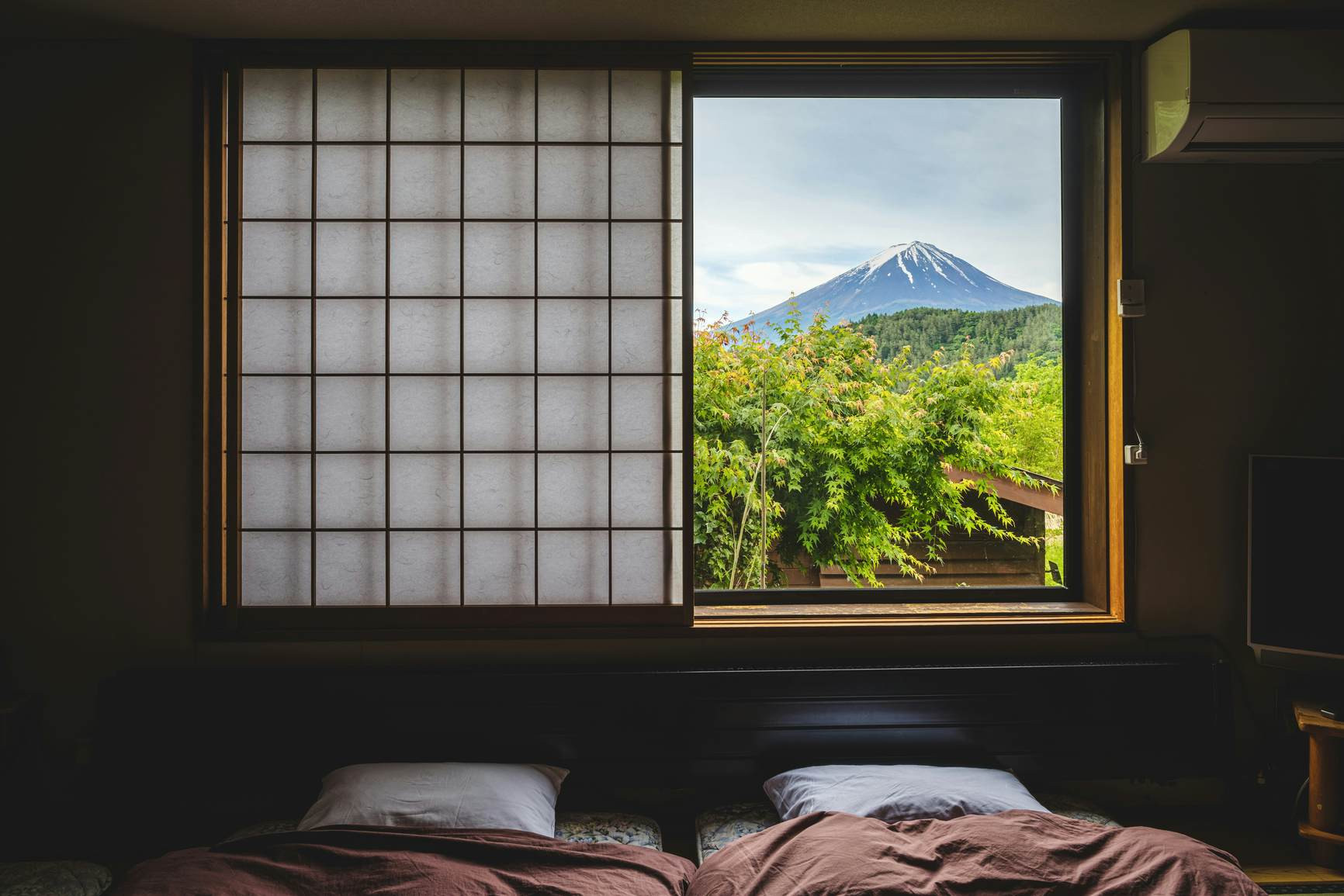 Mount Fuji viewed from a ryokan near Lake Kawaguchi, symbolizing Japan's serene beauty
Mount Fuji viewed from a ryokan near Lake Kawaguchi, symbolizing Japan's serene beauty
4. Tailoring Your Trip: Who Should Visit Japan?
Japan suits travelers interested in rich history, serene nature, and unique cultural experiences. The country’s blend of ancient traditions and modern innovation offers something for everyone. Japan is perfect for:
- History Buffs: Explore ancient temples, shrines, and castles.
- Nature Lovers: Hike through stunning landscapes and relax in onsen.
- Foodies: Savor exquisite cuisine and culinary artistry.
- Culture Enthusiasts: Immerse yourself in traditional arts and modern pop culture.
5. Is South Korea Your Ideal Destination?
South Korea is perfect for travelers seeking vibrant modern culture, delicious food, and friendly interactions. The country’s dynamic atmosphere and rich heritage offer a memorable experience. South Korea is ideal for:
- K-Culture Fans: Immerse yourself in K-pop, K-dramas, and Korean cinema.
- Food Adventurers: Enjoy bold flavors and unique dishes.
- City Explorers: Discover bustling urban centers and historical sites.
- Social Travelers: Connect with friendly locals and experience Korean hospitality.
6. Planning Your Trip with SIXT.VN
Planning a trip to Japan or South Korea can be overwhelming, but SIXT.VN is here to help. We offer a range of services to make your travel experience seamless and enjoyable.
6.1. How Can SIXT.VN Assist with Airport Transfers?
SIXT.VN provides reliable and comfortable airport transfer services in both Japan and South Korea. Our professional drivers will ensure you reach your destination safely and on time.
According to customer feedback, our airport transfer services are praised for their punctuality and convenience.
6.2. What Hotel Booking Options Does SIXT.VN Offer?
SIXT.VN offers a wide selection of hotel options to suit every budget and preference. From luxury hotels to cozy guesthouses, we have the perfect accommodation for your trip.
Our partnerships with leading hotels ensure competitive prices and exclusive deals for our customers.
6.3. How Can SIXT.VN Help with Tour Bookings?
SIXT.VN offers curated tour packages that showcase the best of Japan and South Korea. Whether you want to explore historical sites, enjoy culinary delights, or experience natural beauty, we have a tour for you.
According to our tour guides, our most popular tours include historical sites, local cuisine experiences, and natural scenic spots.
Address: 260 Cau Giay, Hanoi, Vietnam
Hotline/Whatsapp: +84 986 244 358
Website: SIXT.VN
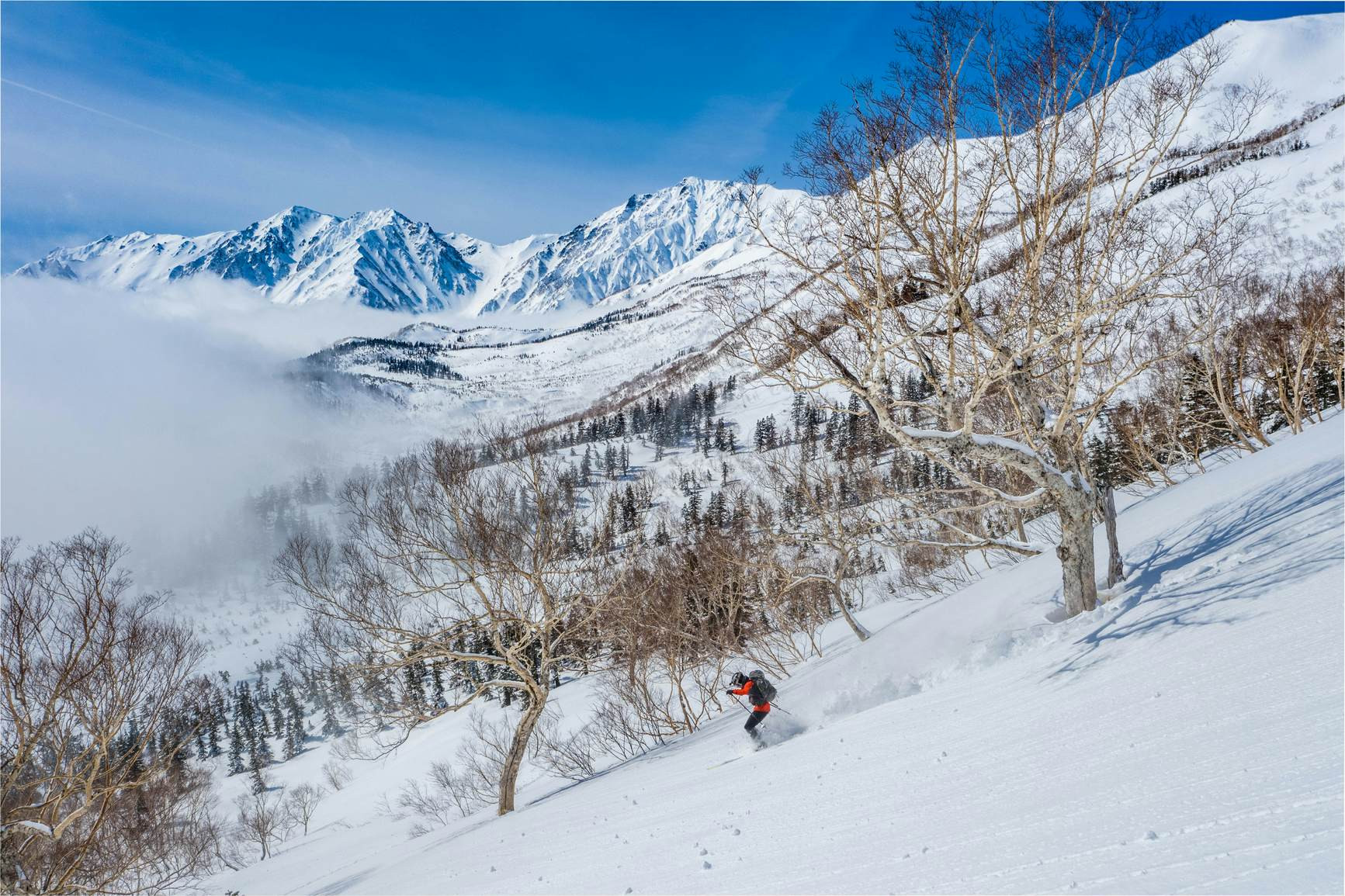 Skiing in the Japanese Alps, showcasing Japan's adventurous outdoor activities
Skiing in the Japanese Alps, showcasing Japan's adventurous outdoor activities
7. Addressing Common Travel Challenges in Japan and South Korea
Navigating Japan and South Korea can present unique challenges for international travelers. At SIXT.VN, we provide solutions to these common issues, ensuring a smooth and enjoyable trip.
7.1. Language Barriers
One of the primary concerns for tourists is the language barrier. While English signage is available in major tourist areas, communication can still be difficult in more remote locations.
SIXT.VN Solution:
- Multilingual Support: Our customer service team offers support in multiple languages, including English, to assist with any inquiries or issues.
- Translation Services: We provide access to translation apps and services to help you communicate effectively with locals.
7.2. Transportation Navigation
Navigating the extensive public transportation systems in Japan and South Korea can be daunting, especially for first-time visitors.
SIXT.VN Solution:
- Detailed Travel Guides: We offer comprehensive travel guides with step-by-step instructions on using public transportation.
- Private Transportation Options: For those who prefer a more convenient option, we provide private car services and airport transfers.
7.3. Accommodation Booking
Finding the right accommodation that suits your budget and preferences can be challenging, especially during peak tourist seasons.
SIXT.VN Solution:
- Wide Range of Options: We offer a diverse selection of hotels, guesthouses, and traditional accommodations to fit your needs.
- Competitive Pricing: Our partnerships with leading hotels and guesthouses ensure you get the best prices.
7.4. Cultural Differences
Understanding and respecting local customs and etiquette is crucial for a positive travel experience.
SIXT.VN Solution:
- Cultural Sensitivity Training: Our staff is trained to provide culturally sensitive services and advice to international travelers.
- Cultural Guides: We offer cultural guides that provide insights into local customs and etiquette, helping you navigate social situations with ease.
8. Essential Travel Tips for Japan and South Korea
To enhance your travel experience in Japan and South Korea, here are some essential tips to keep in mind:
8.1. Japan
- Carry Cash: While credit cards are becoming more widely accepted, many smaller establishments still prefer cash.
- Learn Basic Japanese Phrases: Knowing basic phrases will enhance your interactions with locals.
- Respect Local Customs: Be mindful of local customs such as removing shoes indoors and avoiding loud conversations on public transport.
8.2. South Korea
- Use Public Transportation: The public transportation system is efficient and affordable.
- Download Useful Apps: Translation and navigation apps can be invaluable.
- Try Local Street Food: Don’t miss the opportunity to sample the diverse and delicious street food.
9. Special Events and Festivals to Consider
Timing your visit with local events and festivals can provide a unique and memorable travel experience.
9.1. Japan
| Festival | Date | Description |
|---|---|---|
| Cherry Blossom Festival | Late March to Early April | Celebrates the blooming of cherry blossoms with picnics, parties, and viewing events. |
| Gion Matsuri | July | One of Japan’s most famous festivals, featuring elaborate floats, traditional music, and vibrant processions in Kyoto. |
| Shichi-Go-San | November 15th | A traditional rite of passage for children aged three, five, and seven, celebrated at shrines with special attire and treats. |
9.2. South Korea
| Festival | Date | Description |
|---|---|---|
| Seollal (Lunar New Year) | Varies (usually in January or February) | One of Korea’s most important holidays, celebrated with family gatherings, traditional foods, and ancestral rites. |
| Chuseok (Harvest Festival) | Varies (usually in September or October) | A major harvest festival where families give thanks for the year’s bounty, visit ancestral graves, and share traditional foods. |
| Boryeong Mud Festival | July | A fun-filled festival where participants cover themselves in mineral-rich mud, known for its skin-enhancing properties, on Boryeong Beach. |
10. FAQ: Japan Vs South Korea Tourism
10.1. Is Japan or South Korea more expensive for tourists?
Japan is generally more expensive than South Korea for tourists.
10.2. Which country has better public transportation, Japan or South Korea?
Both countries have excellent public transportation, but Japan’s railway system is more extensive.
10.3. Is English widely spoken in Japan and South Korea?
English is more widely spoken in South Korea than in Japan.
10.4. Which country is better for food lovers, Japan or South Korea?
Both countries offer unique culinary experiences, but South Korea is known for its bold and spicy flavors.
10.5. Which country is better for experiencing traditional culture?
Both countries have rich traditional cultures, but Japan is renowned for its well-preserved historical sites and arts.
10.6. What are some must-try dishes in Japan?
Sushi, ramen, tempura, and kaiseki are must-try dishes in Japan.
10.7. What are some must-try dishes in South Korea?
Kimchi, bulgogi, bibimbap, and tteokbokki are must-try dishes in South Korea.
10.8. Which country is better for outdoor activities?
Both countries offer great outdoor activities, but Japan has more diverse landscapes, from mountains to beaches.
10.9. How can SIXT.VN help with my trip to Japan or South Korea?
SIXT.VN offers airport transfers, hotel bookings, and curated tour packages to make your trip seamless and enjoyable.
10.10. What should I pack for a trip to Japan or South Korea?
Pack comfortable shoes, appropriate clothing for the season, and any necessary adapters for electronics.
Choosing between Japan vs South Korea tourism depends on your personal preferences. Japan offers a serene blend of tradition and nature, while South Korea provides a vibrant and modern cultural experience. Whatever you decide, SIXT.VN is here to make your journey unforgettable with our range of convenient and reliable travel services. Contact us today to start planning your dream vacation!



